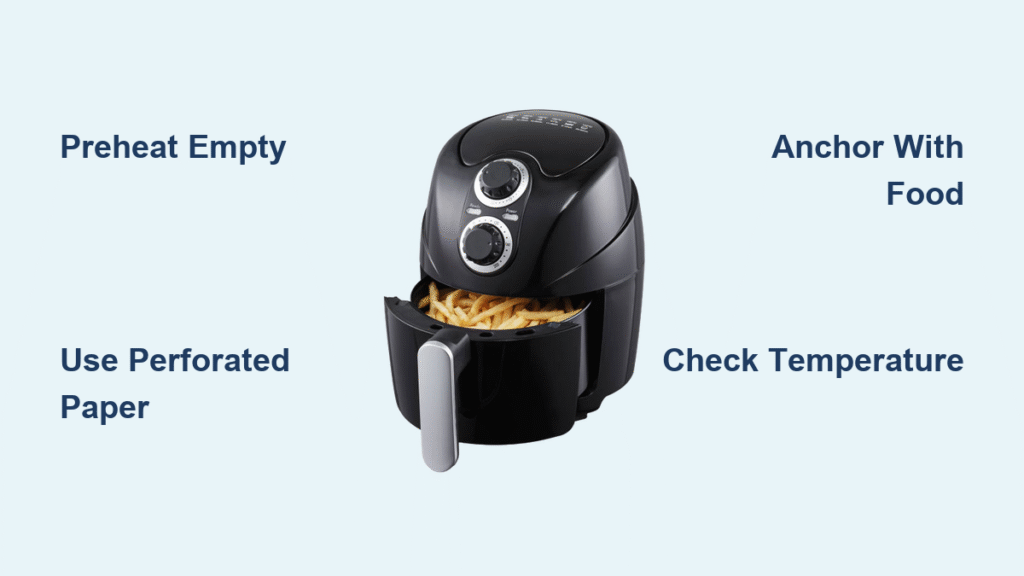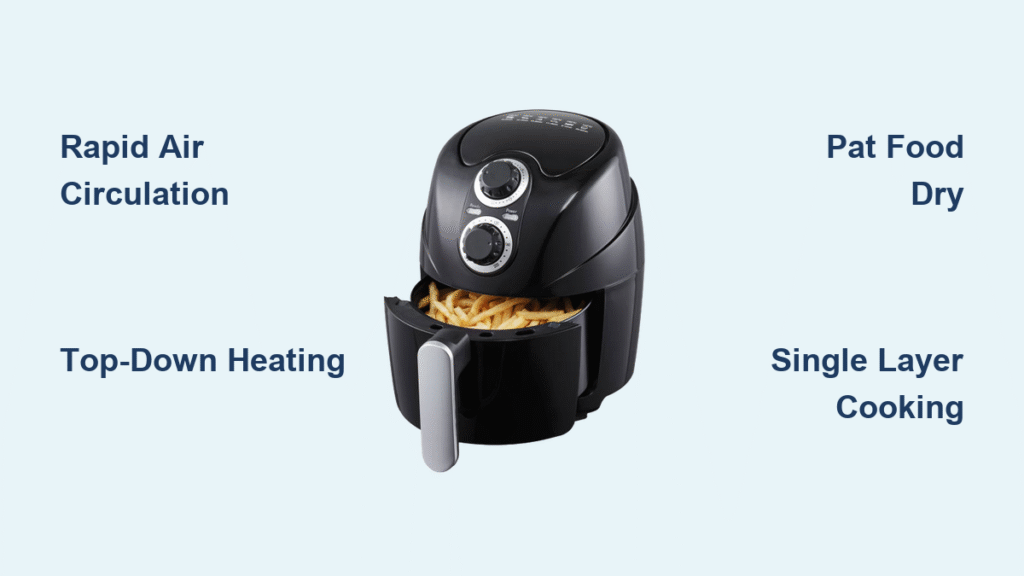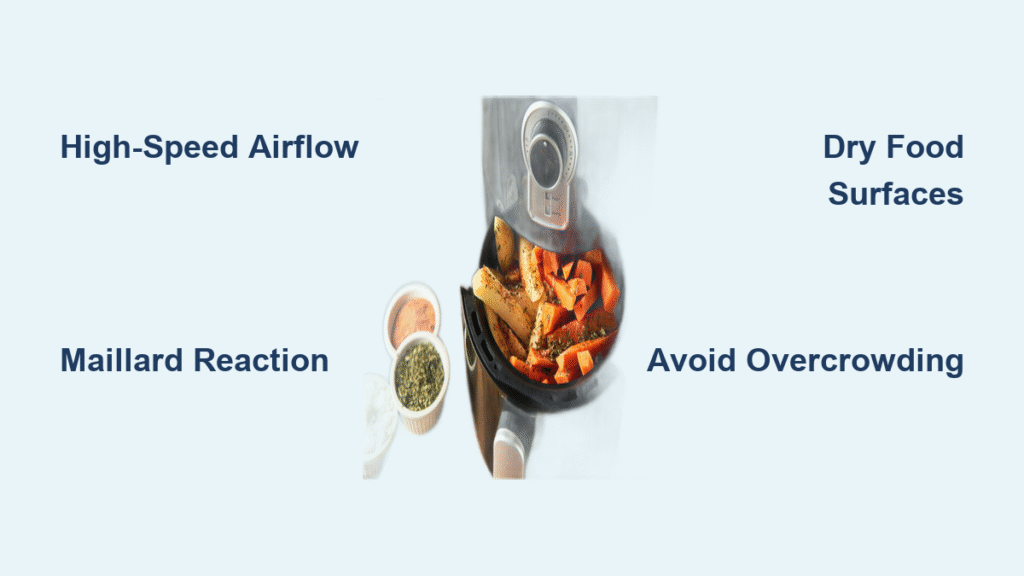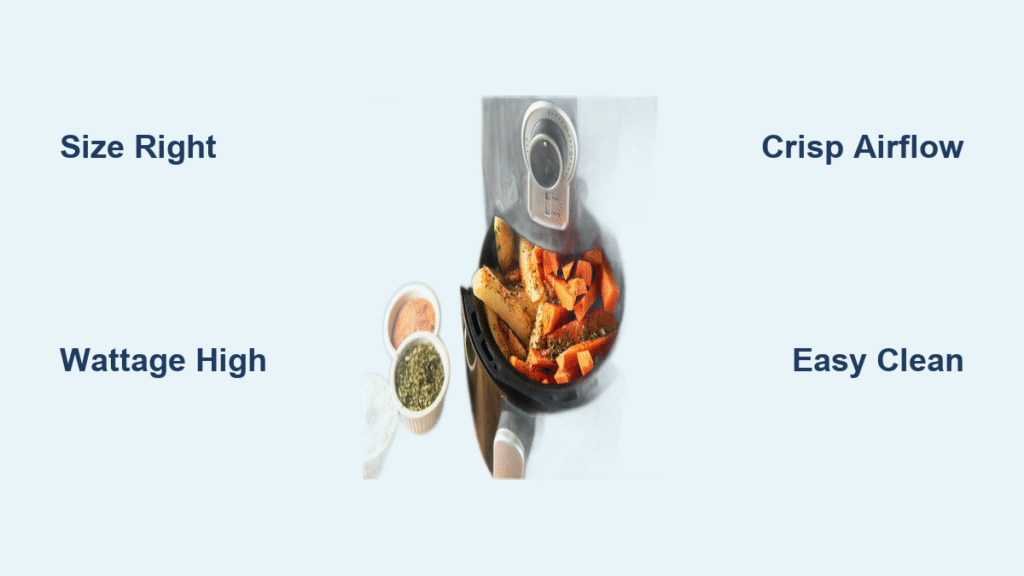Your air fryer basket is caked with stubborn cheese drips from last night’s pizza bites, and scrubbing feels like punishment for your quick weeknight win. You’ve heard parchment paper solves this, but what if it blocks airflow or worse—catches fire? When used correctly, parchment paper keeps your basket spotless while delivering golden-brown fries and crispy salmon skin. This guide reveals exactly how to use parchment paper in air fryer operations safely, including critical temperature limits, foolproof perforation techniques, and which foods benefit most. You’ll learn professional tricks that prevent paper lift-offs and smoke alarms while making cleanup take seconds instead of minutes.
Select Parchment Paper Meeting Air Fryer Temperature Limits

Avoid Wax Paper Meltdowns With Food-Grade Parchment
Never substitute wax paper for parchment in your air fryer—it’s a fire hazard waiting to happen. Wax paper’s paraffin coating melts instantly at air fryer temperatures, potentially igniting or contaminating your food. Always verify the label says “parchment” or “baking paper” before use. True parchment paper uses food-grade paper treated with heat-resistant silicone, making it safe up to specific temperatures. This distinction isn’t just technical—it’s the difference between effortless cleanup and emergency fire extinguisher use.
Match Your Recipe Temperature to Parchment Ratings
Check the maximum temperature on every parchment package before cooking, as exceeding this limit risks scorching or ignition. Most standard rolls handle 400–428°F (204–220°C), but popular Reynolds Kitchens liners cap at 400°F. If your recipe requires 430°F for crispy chicken skin, skip the liner entirely for that cook. Pre-cut perforated rounds often list higher tolerances (like 428°F), but never assume—always match your parchment’s rating to your cooking temperature. When in doubt, lower the air fryer setting by 25°F to stay safely within limits.
Choose Between Bleached and Unbleached Based on Cooking Needs
White (bleached) and brown (unbleached) parchment perform identically in air fryers—both withstand heat and prevent sticking. The difference is purely environmental: unbleached skips chemical bleaching, appealing to eco-conscious cooks. For savory dishes like bacon or roasted vegetables, unbleached works perfectly. When baking delicate desserts like air-fried churros, white parchment avoids potential flavor transfer from the brown paper’s natural fibers. Neither affects crispiness, so select based on personal preference without sacrificing performance.
Create Perfectly Fitting Perforated Liners in Minutes
Trim Paper Smaller Than Basket Floor to Prevent Curling
Measure your air fryer basket floor by placing it upside-down on parchment paper and tracing lightly with a pencil. Cut your liner ¼ inch smaller than this outline on all sides—this critical margin prevents overhang that curls toward heating coils. For round baskets, cut circular liners; for square models, trim precise squares. Never let paper extend beyond the basket’s edge, as even a ½-inch overhang can flutter upward during cooking and contact the top heating element within seconds. This small adjustment is your primary defense against paper ignition.
Perforate Homemade Liners With Kitchen-Ready Tools
If using standard parchment rolls, create airflow holes in under 30 seconds with common tools. Fold your trimmed circle into quarters, then snip tiny triangles along the curved edge every inch. Unfold to reveal a professional-grade perforation pattern with holes spaced approximately 1 inch apart. For square baskets, use a hole punch or paring knife tip to make one ¼-inch hole per square inch across the liner. Hold your creation up to light—visible pinpricks should cover the entire surface. Without these holes, steam traps beneath food, yielding soggy results instead of crispy perfection.
Execute Safe Loading Protocol to Prevent Paper Lift-Offs

Preheat Air Fryer Empty Before Adding Liner
Always start with a liner-free preheat cycle—this is non-negotiable for safety. When you place parchment in a cold basket and start heating, rushing hot air lifts lightweight paper directly into the heating coil. Instead, run your air fryer empty for 3 minutes at cooking temperature. The basket must be hot before introducing parchment. This step seems counterintuitive when you’re eager to cook, but skipping it risks immediate paper ignition. Your patience here prevents a smoky disaster and potential fryer damage.
Anchor Liner Immediately With Food Weight
The moment preheating finishes, place your perforated liner flat in the hot basket, then immediately load food on top. Your chicken wings, fries, or salmon fillets must weigh down the paper within 10 seconds—before rising heat currents can lift it. Never let the liner sit unweighted, even for “just a few seconds” while you season food. The food’s weight maintains contact with the basket floor, keeping paper safely away from heating elements. For lightweight items like broccoli florets, add an extra piece to ensure full coverage and anchoring.
Maintain Single-Layer Food Coverage to Preserve Airflow
Overlap blocks perforations and traps steam, creating soggy patches on your food. Arrange items like bacon strips or frozen fries in a single layer with space between pieces—this ensures hot air circulates through every hole. If your basket is crowded, cook in batches rather than compromising airflow. For delicate proteins like salmon, press gently to ensure full contact with the liner. Remember: the goal isn’t just preventing basket messes; it’s guaranteeing even crisping by maintaining unobstructed airflow paths through those critical perforations.
Optimize Cooking Results for Specific Food Categories
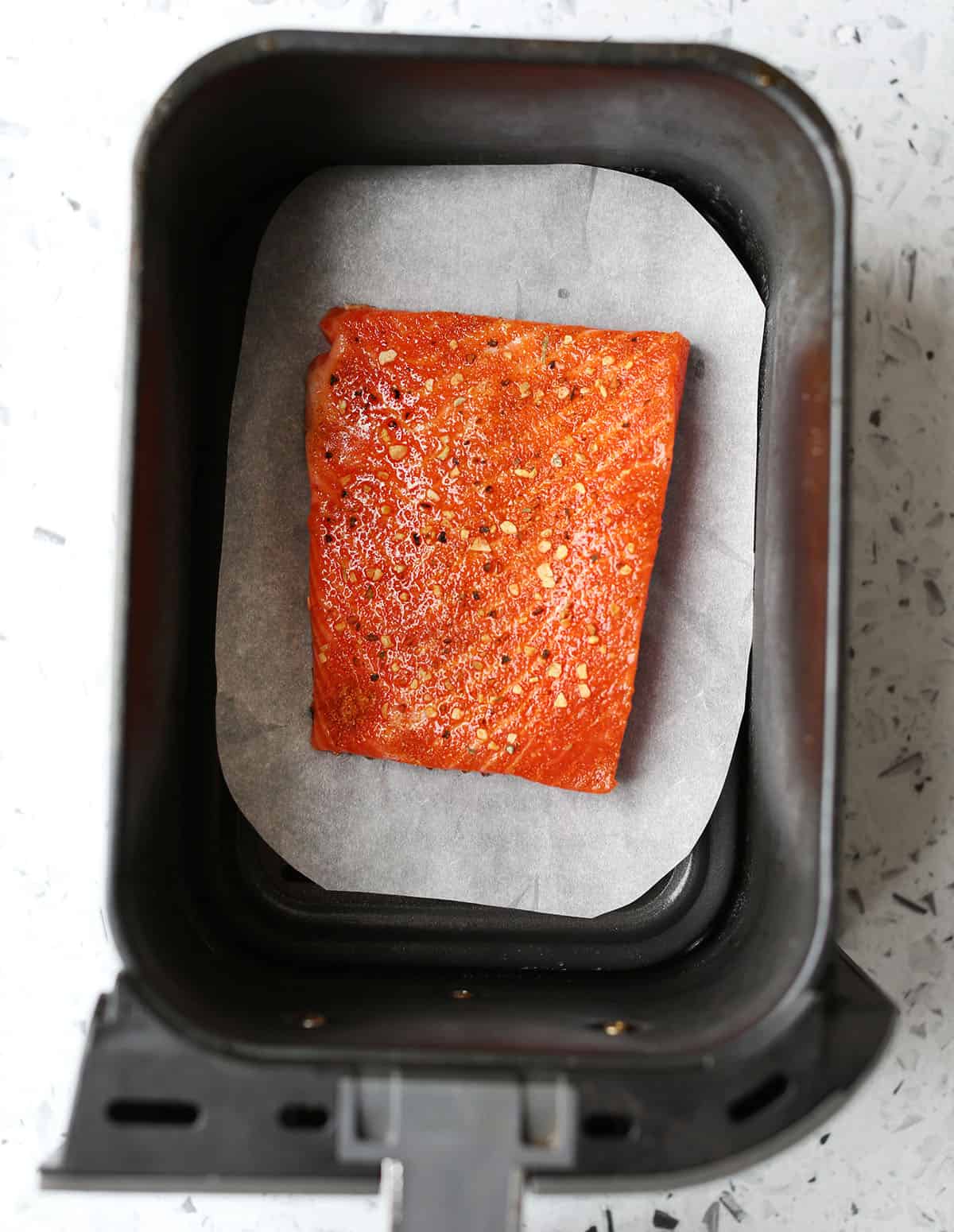
Achieve Crispy Frozen Foods Without Thawing
Toss frozen french fries, chicken tenders, or mozzarella sticks directly onto your perforated liner—no thawing needed. The parchment catches melting ice crystals that would otherwise pool and bake onto the basket. For best results, spray frozen items lightly with oil before cooking. At 400°F for 12–15 minutes (shaking basket halfway), you’ll get golden exteriors without basket residue. Pro tip: Add 2 minutes to frozen vegetable cook times to compensate for initial chill.
Prevent Sticking With Fresh Proteins and Greasy Foods
Pat salmon fillets dry with paper towels before seasoning and placing skin-side down on the liner. At 400°F for 8–10 minutes, the parchment prevents delicate flesh from tearing while allowing skin to crisp. For bacon, lay strips in a single layer—the liner captures rendering fat that would smoke if pooled in the basket. At 375–400°F for 8–10 minutes, you get crisp results without basket scrubbing. When cooking fatty chicken wings (380°F for 22–25 minutes), the perforated sheet ensures even browning by preventing grease buildup.
Troubleshoot Common Parchment Paper Issues Immediately
Fix Uneven Browning Caused by Blocked Perforations
If food bottoms emerge pale while tops are golden, perforations are likely obstructed. Check for sauce drips sealing holes or overlapping food pieces. Next time, reduce sauce volume or increase hole density during perforation. For immediate fixes during cooking, carefully lift food to expose covered holes—never adjust paper once it’s hot. This issue commonly occurs with cheese-heavy items like pizza bites; pre-cooking the crust for 2 minutes on parchment before adding toppings prevents pooling.
Stop Paper Curling With Smaller Liners and Faster Loading
Curling edges signal imminent danger—they’re flirting with heating coils. If you see this mid-cook, immediately pause the air fryer and trim the liner smaller next time. Also verify you’re loading food within 10 seconds of placing the liner in the preheated basket. For square baskets, round off corners slightly during cutting to prevent lift-off points. Never attempt to flatten curling paper during operation—this risks burns and doesn’t address the root cause.
Follow Critical Safety Protocols for Fire Prevention
Never Use Liners in Toaster-Oven-Style Air Fryers
Reynolds Kitchens and other manufacturers explicitly warn against parchment in toaster-oven-style air fryers. The heating elements sit too close to the cooking tray, creating unavoidable contact points. Even perforated liners ignite rapidly in these models due to reduced clearance. Check your manual—if it resembles a mini oven with top-down heating, skip parchment entirely. Use only in basket-style fryers where heating elements surround but don’t directly overhang the cooking surface.
Monitor Every Cook and Never Walk Away
Parchment-related incidents almost always happen when users step away during cooking. Stay within arm’s reach for the entire cycle, especially the first 5 minutes when paper is most vulnerable. A sauce bubble-over or temperature spike can ignite paper in under 20 seconds. Set a phone timer as backup, but never rely solely on it. This isn’t paranoia—it’s respecting how rapidly air fryer temperatures escalate and how lightweight paper reacts to sudden airflow changes.
Master Pro Techniques for Daily Efficiency
- Batch-prep Sunday liners: Trace your basket on parchment, cut 10 circles, and store in a zip-top bag. Grab one during weeknight cooking for instant setup.
- Double-duty grease collection: After air-frying bacon, lift the liner corners to pour rendered fat into a mason jar for future cast-iron seasoning.
- Hole verification method: Hold liners against a light source—if shadows block more than 30% of the surface, add more perforations.
- Color-coded usage: Reserve unbleached parchment for savory dishes and white for sweets to prevent subtle flavor transfer between cooking sessions.
Final Note: When you implement these parchment paper techniques, your air fryer transforms from a cleanup nightmare into your most reliable weeknight hero. You’ll consistently achieve restaurant-quality crispiness while reclaiming 10 minutes of scrubbing time per meal. Remember the golden rules: always preheat empty, anchor with food immediately, and never exceed your parchment’s temperature rating. Within two weeks, these steps become second nature—leaving you with spotless baskets and perfectly crisped meals every single time. For toaster-oven-style fryer owners, aluminum foil (weighted with heavy food) remains a safe alternative when parchment isn’t recommended.

